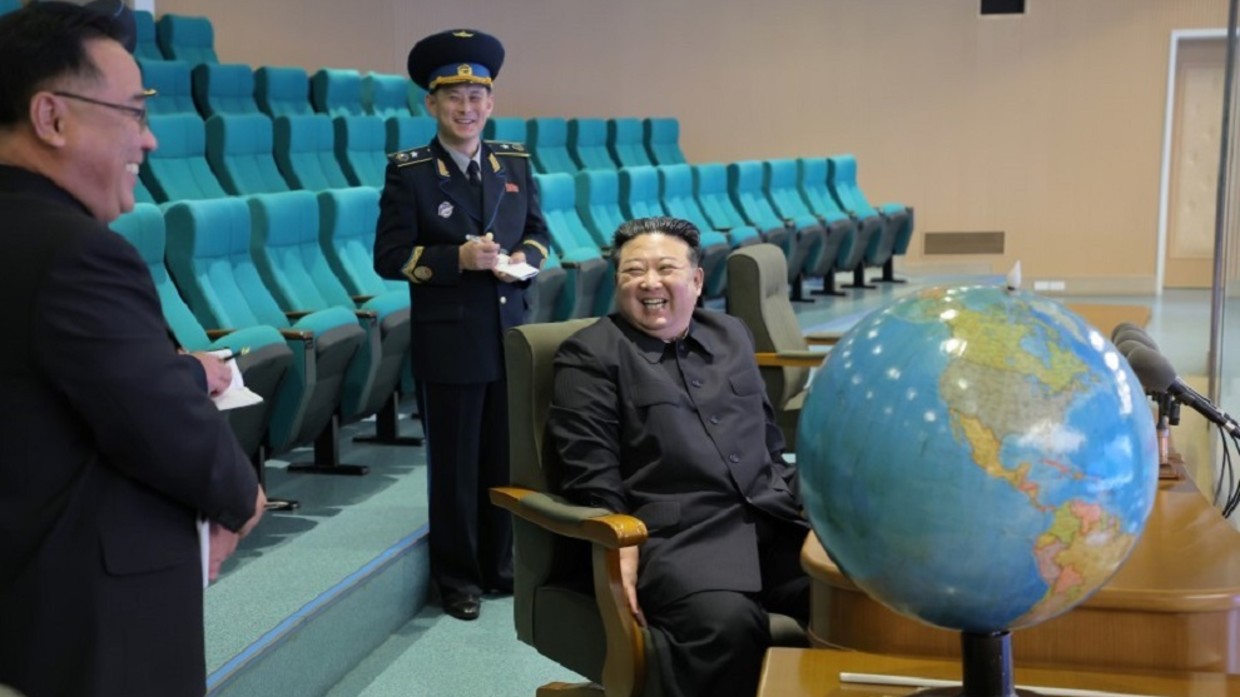North Korean leader Kim Jong-un has heralded as a military breakthrough the country’s first successful launch of a spy satellite, saying it would help protect Pyongyang from the “dangerous and aggressive moves” of its adversaries.
Kim attended a celebration of the satellite program on Thursday, praising scientists and technicians from North Korea’s National Aerospace Technology Administration (NATA), according to the state-run Korean Central News Agency (KCNA). Accompanied by his wife, he was photographed grinning and waving at a banquet hall in Pyongyang, where his daughter Ju-ae and space agency workers were seen wearing matching NATA T-shirts.
Tuesday’s launch “propelled the county into a new era of space power,” Kim said. He called the deployment of a spy satellite a “full-fledged exercise of the right of self-defense.” Just hours after the launch, North Korea’s government claimed that Kim was already viewing images of US military bases in Guam.
On Friday, KCNA reported that Kim was inspecting photos that the spy satellite captured of “major target regions,” including Seoul and South Korean cities that host US military bases. South Korean officials said it was too early to verify the satellite’s capabilities.
Seoul responded to the launch by partially suspending a 2018 military de-escalation agreement with North Korea, resuming surveillance flights near the border between the two Koreas. North Korea’s defense ministry, which announced on Thursday that it was terminating the deal, said South Korea would “pay dearly” for its “reckless” decision to breach the agreement.
Tuesday’s launch of the Malligyong-1 satellite followed failed attempts in May and August. South Korea’s National Intelligence Service (NIS) said on Thursday that Pyongyang likely received technological assistance from Russia, making the successful launch possible.
North Korean Premier Kim Tok-hun said the satellite would enable Pyongyang to strike targets anywhere in the world. The project was a key component of North Korea’s five-year military development plan, presented in January 2021, which also included solid-fuel intercontinental ballistic missiles (ICBMs).


